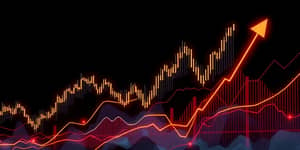
Commodity trading is more than just numbers and charts; it embodies human resilience, foresight, and adaptability. In a world where weather events, political shifts, and economic cycles intertwine, raw materials become a canvas for ambition and strategic mastery. This guide will illuminate the path toward harnessing raw material price swings and equip you with the tools to thrive.
At its core, the commodity market is a battleground where hard assets such as oil, gold, copper, and soft goods like coffee or wheat exchange hands. Traders and investors congregate in exchanges worldwide, from the Chicago Mercantile Exchange to the London Metal Exchange, to speculate on future values or secure physical supplies. This realm demands cognitive discipline and precision—qualities honed through research, practice, and resilience.
While some participants seek to hedge real-world business exposures, others chase pure speculation. Regardless of motive, every market actor contributes to price discovery, liquidity, and the ebb and flow of supply and demand. By grasping these fundamentals, you position yourself to interpret price signals and anticipate turning points.
Commodity prices are shaped by a complex web of influences—some predictable, others sudden and disruptive. To navigate these waters, it’s crucial to identify and monitor core drivers.
By tracking weather reports, geopolitical headlines, and economic calendars, traders can anticipate potential price catalysts and align positions to capture emerging trends.
Traders employ a spectrum of methods to extract profit from commodity price dynamics. The most effective strategies blend analytical rigor with emotional discipline, recognizing when to act decisively and when to step aside.
Each approach carries unique nuances: trend followers require patience to let winners run, while breakout traders must manage false signals. Choose the style that aligns with your risk tolerance and personality.
Technical analysis provides a quantitative lens through which to view market behavior. Used judiciously, indicators can offer timely entry and exit signals, bolstering your confidence in critical moments.
By combining multiple indicators, you achieve a more robust signal while mitigating false readings. For instance, a breakout validated by both volume surges and RSI confirmation often precedes sustained moves.
No strategy succeeds without proactive risk management. Commodity markets are inherently volatile; protecting capital through disciplined controls is non-negotiable.
Position sizing ensures that a single trade cannot inflict catastrophic loss. Calculate risk per trade as a fraction of your total equity and adjust contract volumes accordingly. Equally critical are stop-loss orders. Place them beyond recent swing points, creating room for normal price noise while capping downside risk.
For businesses exposed to raw material costs, hedging with futures or options provides a direct mechanism to lock in prices. While hedgers sacrifice unlimited upside for certainty, speculators can adapt similar tactics to manage portfolio volatility.
Accessing commodity markets requires suitable platforms and instruments. Futures contracts offer direct exposure but demand margin management and attention to contract specifications. Options deliver asymmetric risk profiles, allowing limited downside in exchange for upfront premiums.
Exchange-traded funds (ETFs) and commodity-linked stocks provide indirect exposure with lower leverage, suitable for retail traders seeking diversification. However, beware of tracking errors and company-specific risks.
Mastering commodity trading is a journey of continuous learning, emotional fortitude, and strategic refinement. By understanding market drivers, applying disciplined strategies, and managing risk with rigor, you stand poised to capitalize on volatile market conditions and craft a roadmap toward long-term success.
Embrace the challenge. Commit to ongoing research, backtesting, and holistic risk controls. In doing so, you transform the unpredictable dance of raw material prices into an arena of possibility, where informed decisions yield tangible rewards and lasting growth.
References













